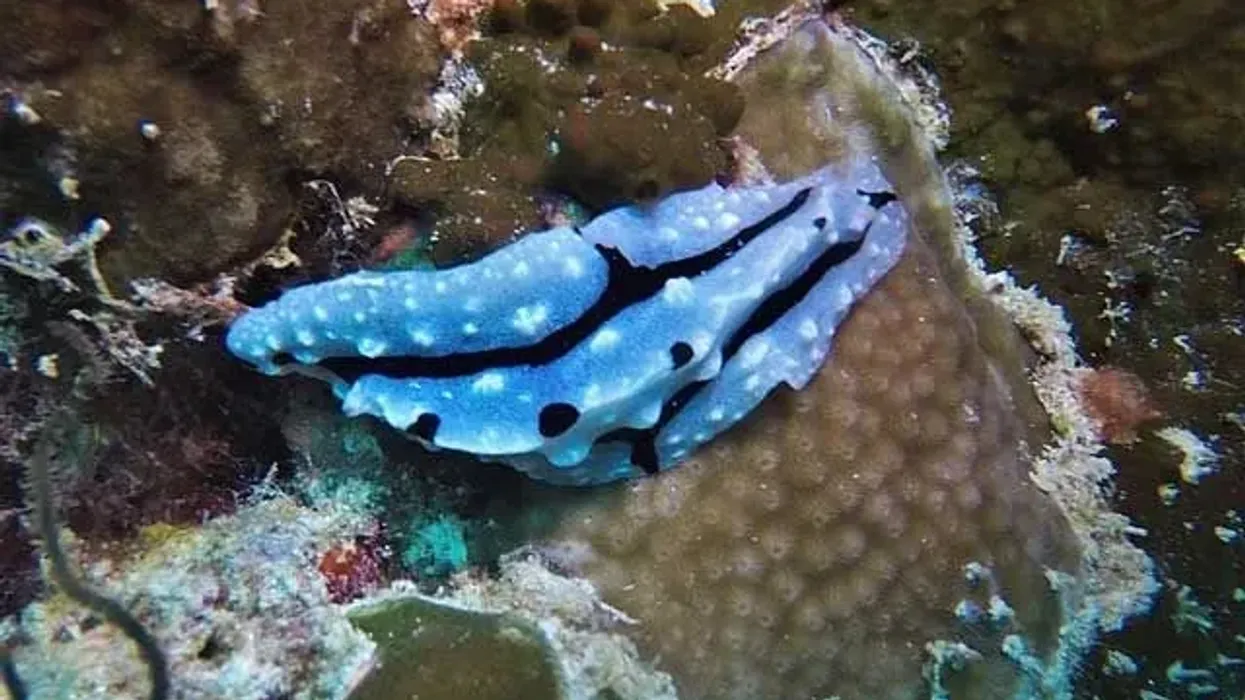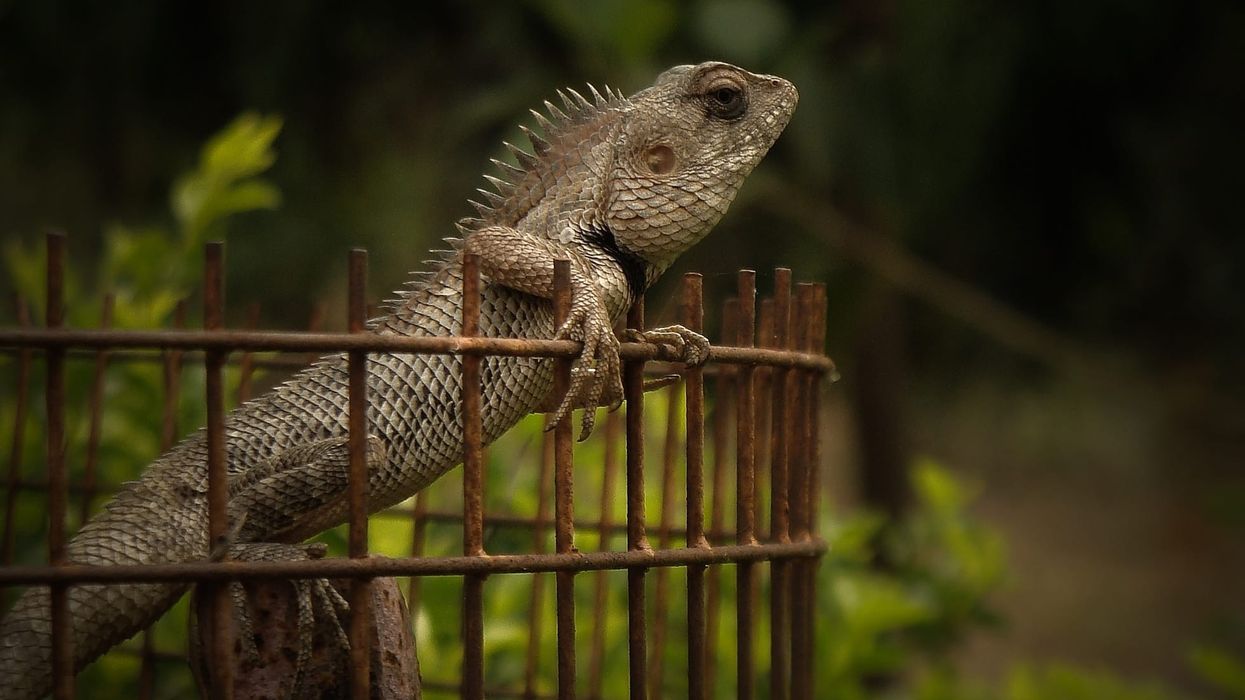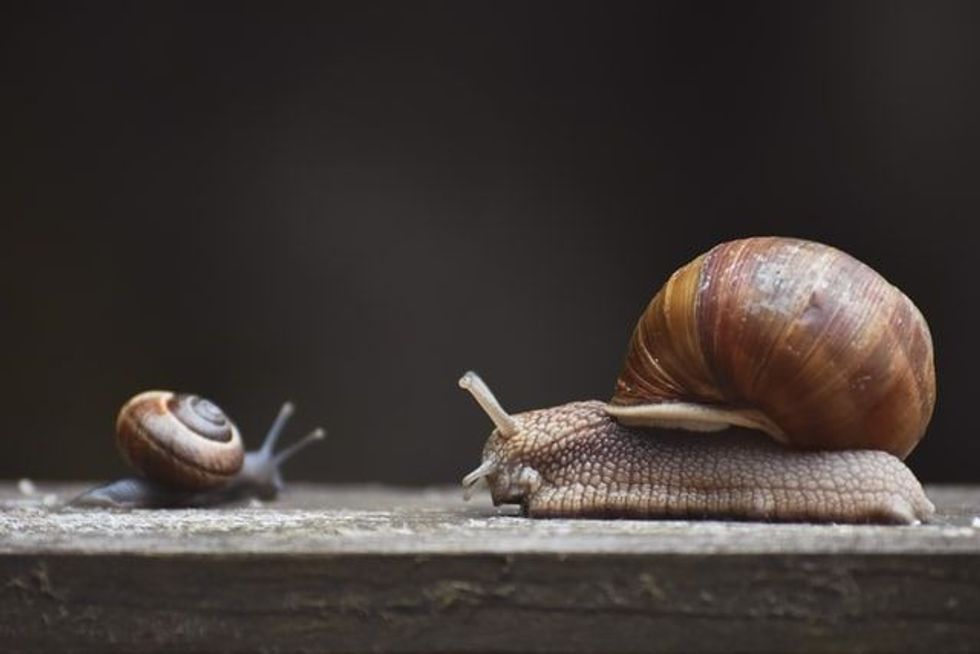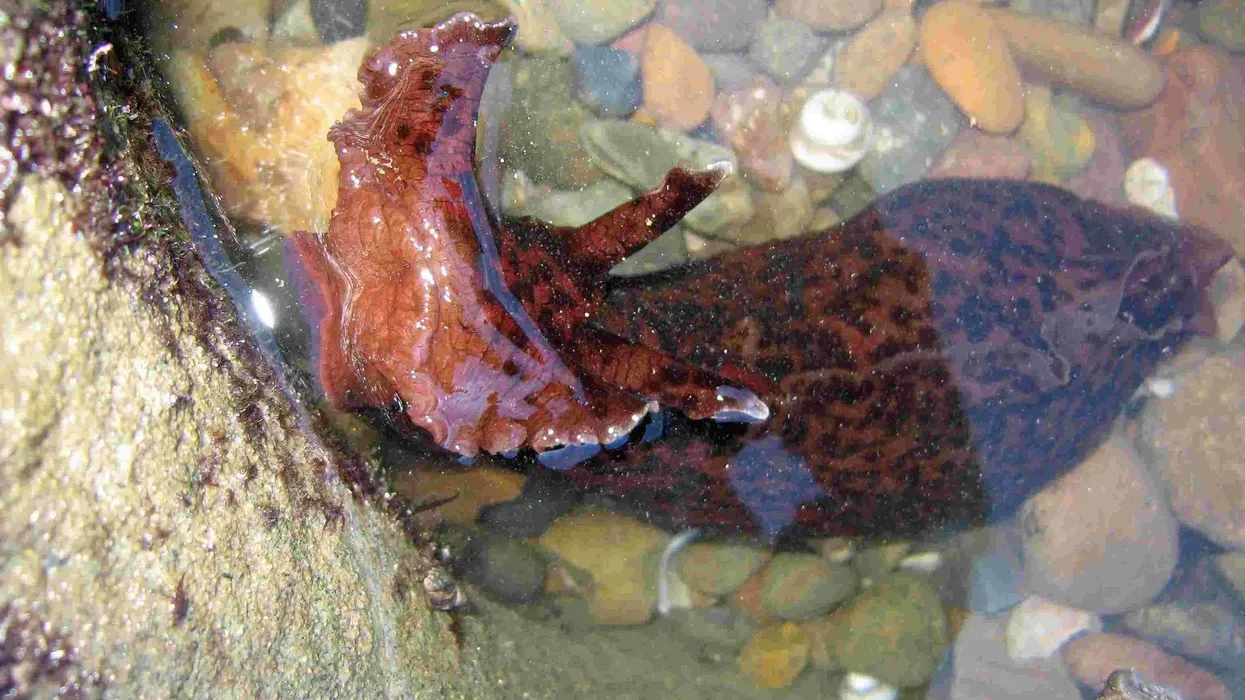The blue sea slug, also known by many names like Glaucus atlanticus, blue dragon, and sea slug swallow, is one of the species of sea slug, called the nudibranch. This magnificent marine creature belongs to the Mollusca phylum that does not have a shell.
The unique thing about the blue sea dragon swallow is that they use a special feature called rhinophores to find their prey. Rhinophores are chemicals that aid with the sense of smell, so the blue angel may judge the exact location of their food or prey.
These ocean creatures not only eat species like Portuguese man o' wars, but they can also feed on their own kind if they don't find their prey.
The blue Glaucus is one of the most dangerous animals as these creatures prey on venomous species. While eating them, nudibranchs tend to store the stinging nematocysts of that animal into their tentacles. These creatures (nudibranchs) then use that venom to sting blue sea slug predators for their protection.
Here on our page, we have lots of amazing blue sea slug information that everyone will enjoy. Let's look at these interesting facts; if you like these, then do read our articles on these slipper lobster facts and ghost shrimp facts.
Blue Sea Slug Interesting Facts
What type of animal is a blue sea slug?
The blue dragon (Glaucus atlanticus) is shell-less, and these creatures belong to the Mollusca phylum. This sea slug is a brightly colored animal that floats in the water with the help of ocean currents.
Blue glaucus nudibranchs are naturally colored so that they can easily camouflage themselves in the moving water because of their darker blue shade that is similar to the color of the sea. It is also known as a blue sea dragon, sea swallow, blue angel, blue Glaucus, dragon slug, blue dragon, and blue ocean slug.
What class of animal does a blue sea slug belong to?
The blue dragon sea slug is a gastropod that belongs to the class of Gastropoda and the family Glaucidae animal species.
How many blue sea slugs are there in the world?
The population of these beautiful Glaucus atlanticus species of nudibranch is not estimated yet because of their vast growth. These stinging creatures are found worldwide from the Northern to the Southern Hemisphere.
Another reason for their vast population is that each blue angel sea slug gives birth to the offspring. They are not differentiated as male and female as they are hermaphrodites and have both organs.
Where does a blue dragon sea slug live?
Blue dragons are found worldwide. These creatures reside in the open water regions and in temperate and tropical regions like the Atlantic Ocean, Indian Ocean, and the Pacific Ocean.
What is a blue sea slug animal's habitat?
The habitat of blue sea slug is found everywhere in this world. Their distribution has been recorded from European regions to the south and east of Africa, Australia, and even in the south Bay of Bengal regions of India. These stinging blue dragon sea slugs are found both floating in oceans and on the surface, mainly at the beach.
Who do blue sea slugs live with?
The blue Glaucus is a solitary animal. These stinging animals come together only during the mating season.
Otherwise, they stay alone. One of the reasons they stay in solitude is that when they cannot find their venomous prey like the Portuguese man o' war, they start feeding on each other, making blue dragon sea creatures avoid each other to protect their own lives.
How long does a blue sea slug live?
The average blue sea slug life span is between three months to a year. If the blue Glaucus lives in the right conditions, they can live up to a year, or otherwise, can die in a few months itself.
How do they reproduce?
Although the anatomy of a blue sea slug includes both female and male organs as they are hermaphrodites, they cannot mate on their own. The blue dragons come together for the mating process.
After the mating process is finished, the pair separates, then what is found is the blue sea slug laying eggs on floating pieces. Both parents do not care for the eggs. The eggs are spiral-shaped and long and are laid in a string in which 12-20 blue sea slug eggs are found.
The eggs hatch on their own, and the young stay floating until their air sacks develop. However, the average litter size of sea slugs is 500-25 million.
What is their conservation status?
The Pacific blue sea slug genus species are in the status of Least Concern animals. The distribution of these animals is even throughout the world, and their population is intact and is in full growth.
Blue Sea Slug Fun Facts
What do blue sea slugs look like?
Blue dragons are very attractive creatures because of their appearance. They have dark blue and light blue color combinations with silver or grey dorsal fins.
They have six arms or fingers called cerata and a flat body with dark blue colored strips on their head. The blue sea slug eyes (nudibranch) are embedded with their skin and are not visible to human beings.
How cute are they?
The sea slug (blue dragon) is a very attractive and cute creature because of its color and appearance. Usually, the people at the beach pick them because of their appearance, but they are very dangerous as they sting and leave the venom from the nematocysts.
How do they communicate?
The communication process between blue dragons takes place with the help of the special chemical pheromones that these creatures produce. What is also impressive is the blue dragon animal's ability to detect the slime trail of the other slugs.
How big is a blue sea slug?
The yellow and blue sea slug size can be around 1.2 in (3 cm) in length. These creatures are three times smaller than a medium size fish.
How fast can a blue sea slug move?
The average speed that a blue sea slug range is not researched to this date. The reason is that the blue dragon floats on the surface of the water, and its floating speed is fully dependent on the speed of the water current.
How much does a blue sea slug weigh?
The average weight of the sea slugs is very less. It can be around 2.4 oz (70 g) in total.
What are the male and female names of the species?
There are no specific names for the male and female species of sea slugs. The reason is that the blue sea slug anatomy includes male and female organs in their body, and these creatures do not have male and female species.
What would you call a baby blue sea slug?
There is no specific name for a baby blue sea slug. They can be called the young or baby blue sea slug.
What do they eat?
The diet of the sea slugs is made up of small and venomous snails and jellyfish such as violet snails and blue button jelly. The favorite food of these creatures is the Portuguese man o' wars.
The man o' war has a venomous sting inside their body that the sea slugs store and then use for their own protection from the predators of blue sea slug. Blue dragons also feed on each other.
Are they poisonous?
No, sea slugs are not directly poisonous or venomous, but these creatures store the venom of the animals that they kill, and then they use them for their own protection against their predators. That stored venom is very poisonous that can also kill human beings.
Would they make a good pet?
No, the blue dragon sea slug pet cannot be a satisfactory pet to a human. The reason is that the blue sea slug pet is dangerous because they sting and also display cannibalistic behavior with their species. They are still sold on the market for $50-100.
Did you know...
Some researchers say that sea slugs (blue dragons) also feed on the reproductive organs of their pair during the process of mating.
The blue sea slug has evolved and adapted in many ways. They have a sac filled with gas in its stomach that helps them stay afloat.
They contain three layers of germs.
How does the blue sea slug defend itself?
Sea slugs absorb toxic chemicals and stinging cells from their prey into their skin inside the end of their arms as predators. This ability provides the blue Glaucus with a strong defense mechanism against their predators.
What is the relationship between the blue sea slug and the Portuguese man o' war?
The diet of both the animals is similar as the Portuguese man o' war predators include both the man o' war and blue sea slug. Man o' war also feeds on the blue button jelly animals, which is also the food of sea slugs.
Here at Kidadl, we have carefully created lots of interesting family-friendly animal facts for everyone to discover! For more relatable content, check out these glass snail facts and dot snail facts pages.
You can even occupy yourself at home by coloring in one of our free printable Blue sea slug coloring pages.










